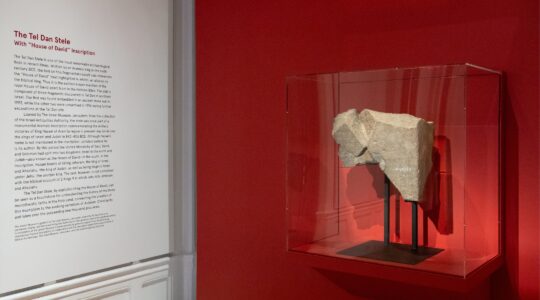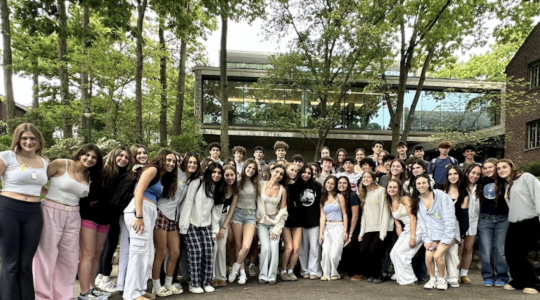The child in the old home movies projected onto a large screen is the young Netta Yerushalmy, at first a toddler walking in front of the camera, and then as a very young dancer, practicing her movements. On stage, the award-winning choreographer Yerushalmy imitates the young girl’s moves. As the video sequences are repeated, Yerushalmy shifts the novice’s movements into formal structures.
The young Netta is full of confidence and show business; she’s enjoying the spotlight and her own sense of mastery — the film is shot in her house in South Carolina, and then at their new home in Israel, where Netta grew up. And while the young girl jumps around to music with great self-assurance, the grown Yerushalmy is serious, refined, precise and also self-assured, as she moves through space at the beginning of “Helga And The Three Sailors” (Nov. 6-8, 8 p.m., Danspace Project inside St. Mark’s Church in-the-Bowery, 131 E. 10th St., danspaceproject.org).
Yerushalmy is joined on stage by dancers Marc Crousillat, Amanda Kmett’Pendry and Sarah Lifson in this world premiere at Danspace Project, located inside of St. Mark’s Church-in-the-Bowery. As Yerushalmy dances across the stage, she approaches the altar as well as the audience. The piece features original music performed live by composer and vocalist Judith Berkson, who is a cantor.
“I see in her body things that I recognize as driving what I make now as a choreographer,” Yerushalmy says of her younger self, in an interview in the dance studio where she recently rehearsed with two of the dancers.
The piece is more poetry than narrative, showing the shifting relationships between bodies, between Netta and the young Netta, between Netta and the other dancers, who are exacting in their movements and gestures. They fill the spaces between, the so-called “empty spaces,” with energy.
Yerushalmy thinks of the stage as a canvas. With the three dancers, each wearing a different deep solid color against a white background, she creates many paintings next to each other, which she describes as a cubist collage.
She also works with the muscles of the eye as part of her choreography; in fact, there’s an eye solo here.
Yerushalmy, who had her first dance recital at age 3, trained in Israel at the Misgav Dance Workshop; in 1996, she moved back to the U.S., to study at the Tisch School of the Arts here.
She received a Six-Points Fellowship (as did Berkson) and has received as well a long list of other grants and fellowships, including a Jerome Robbins Bogliasco Fellowship and a Guggenheim Fellowship in Choreography; she was recently an Artist-In-Residence at the Institute for Cultural Inquiry in Berlin, the Baryshnikov Arts Center and Tribeca Performing Arts Center. Since 2011, she has been a Guest Artist and visiting faculty member at the University of the Arts in Philadelphia.
Yerushalmy has performed with the Metropolitan Opera Ballet and now dances with choreographer Joanna Kotze.
In an essay for the Dancspace program, dancer Neal Beasley of Trisha Brown Dance Company writes, “Such is the sweet white lie of dancing: Its beauty is in the permission it gives us to slide in and out of recognizing, freed from the need to apprehend, lost in a blind pleasure where, by virtue of being scrambled, meaning gets taken off the table.”
Support the New York Jewish Week
Our nonprofit newsroom depends on readers like you. Make a donation now to support independent Jewish journalism in New York.
The New York Jewish Week brings you the stories behind the headlines, keeping you connected to Jewish life in New York. Help sustain the reporting you trust by donating today.




